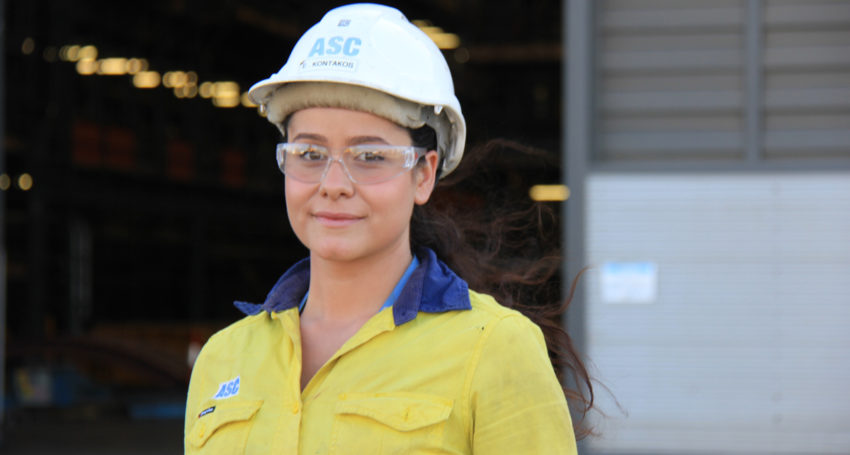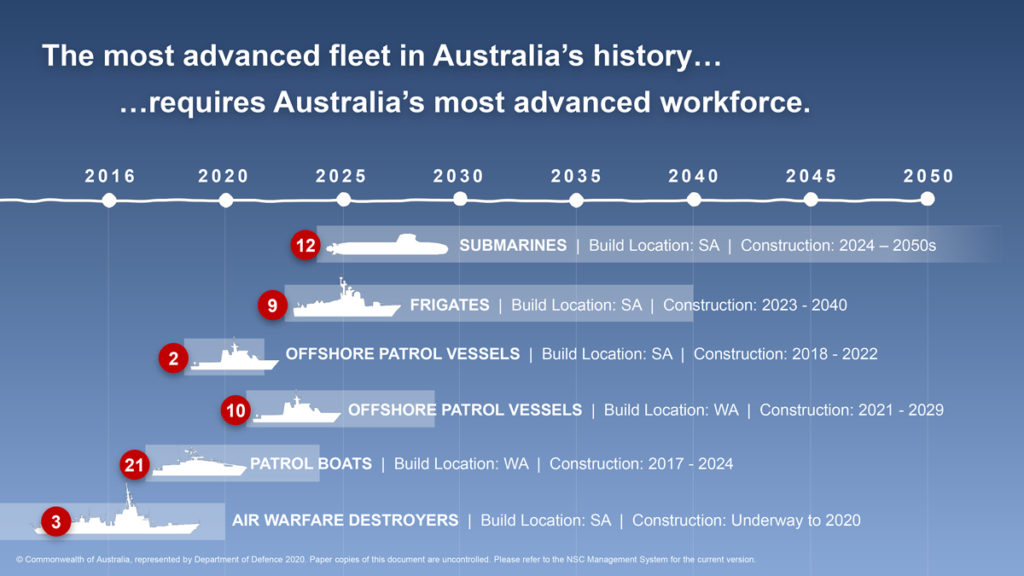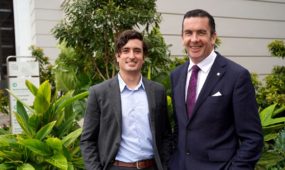Ship-shape welding skills to inspire more girls
Defence
Nine female high school teachers are soon to complete a TAFE SA welding course they hope will help inspire more young women to pursue careers in naval shipbuilding.

Sign up to receive notifications about new stories in this category.
Thank you for subscribing to story notifications.

The South Australian teachers are a mix of design & technology teachers, course co-ordinators and art teachers from one catholic school and six government high schools across metropolitan Adelaide.
The first of its kind in South Australia, the TAFE SA basic welding course aims to arm teachers with skills to help them inspire their female students to consider a career in the welding trade, which has been traditionally dominated by men.
There is now a waiting list of female and male teachers wanting to do the course, which is funded by the Australian Department of Defence through the Advanced Technology Program (ATP) and managed within the South Australia Department for Education.
ATP manager Dr Sarah Baker said improving a teacher’s basic understanding and skills in welding allowed them to introduce it with confidence in design and tech or even art classes and put it on a student’s radar as a potential career.
She said traditionally welding was seen as a career for big strong men who can heft heavy steel.
“There are still those jobs out there but particularly with shipbuilding and aerospace there is a lot of technical welding and smaller framed people who are a bit more agile are well suited to some of those jobs,” Dr Baker said.
“Even some of our design and tech teachers don’t have a lot of welding skills so we thought we’d start with a girls only basic welding skills program and we had more than nine teachers put in interest so we’re looking to run it again but we’ll probably include men next time.
“We are talking to students about life-long learning so it’s good for them to see their teachers still learning. One of the teachers was telling me that when she goes back to school on a Thursday the students come up and ask her ‘what did you learn last night’ so they are also seeing their teachers learn, which is great for their futures.”
The South Australian capital Adelaide is at the centre of Australia’s $90 billion National Naval Shipbuilding Enterprise.
The first ramp up in demand for skilled workers such as welders in the shipbuilding program is expected next year when Australia’s $35 billion Hunter Class Frigate Program begins in earnest.
Nine anti-submarine warfare frigates will be built by ASC Shipbuilding at the Osborne Naval Shipyard in Adelaide in what is being described as the largest surface ship project in Australia’s defence history. The frigate program alone is expected to create 1000 apprentice and graduate jobs throughout the program’s life across a range of disciplines.

The goal of the ATP program is to reduce skills shortages by increasing the number of STEM students who have skills and capacity to go on to defence industry careers.
Dr Baker said the main areas of focus for the program in South Australia were shipbuilding, aerospace/space, cyber and technology and advanced manufacturing.
“We originally ran a teacher industry tour allow our teachers to find out what’s happening in the defence industry and how they can modify their curriculum and use real life examples to give context to learning like how calculus can be used to work out a satellite’s position,” she said.
“We’re looking at running more of these basic skills or micro-credentialling courses. We’re looking at potentially running a CAD one now that 3D printers are in school – a lot of teachers just want basic skills.”
The two-year first building of five test blocks at the world-class digital shipyard in Osborne, is beginning in December this year with construction of the first frigate expected to commence in 2022.
Headquartered in Adelaide, the Naval Shipbuilding College’s role is to ensure Australia has the right mix of skilled workers to fuel the national shipbuilding program.
Chief executive Ian Irving said a register of people who had expressed interest in a shipbuilding career was running at 14 per cent female registrations, which is above the current industry average but well short of the college’s ultimate aim of 50 per cent.
He said the days of factories and shipyards being the domain of males were long gone.
“If we look at the submarines and the frigates, they are some of the most complex machines man will build in the next decade and there’s a great opportunity for male and female students to get the training they need to be job ready and come into this arena,” Irving said.
“Welding now is very hi-tech involving robotics and very advanced capabilities in shipbuilding, particularly in the submarine domain, so we’ll be looking for the very best capabilities in the workers coming through.”
ASC metal fabricating apprentice Evyenia Kontakos said she believed she was the first woman to weld on the hull of a Collins Class submarine in South Australia.
“There’s not a lot of people who can say that. My work is physical and challenging, the hours are great and the pay is excellent,” the 25-year-old said.
“Welding requires strong hand-eye co-ordination skills and it’s not something that everyone else can do. Once I started on welding I didn’t want to do anything else.
“After spending time working on a boat or ship, to see it sail out for the last time is incredibly rewarding. I always stay up to date with the news so I hear about where the boat is or what it’s doing around the world and I take a lot of pride in that.”
Jump to next article



